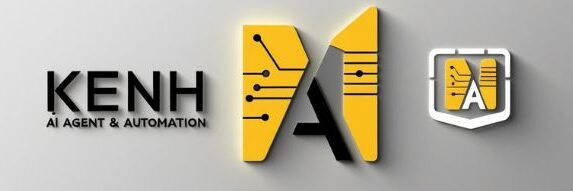The Power of Modular AI Workflows
Introduction
AI development in 2025 has shifted from monolithic architectures to modular workflows—a change that has supercharged speed, flexibility, and innovation. Whether you’re building customer service agents or full-scale automation pipelines, modularity is key to success.
This article explores the components, applications, and future trends of modular AI workflows—and why they matter now more than ever.
What is The Power of Modular AI Workflows?
Modular AI workflows are systems where each component (data input, processing, reasoning, decision, output) is independent, interchangeable, and can be reused across different tasks.
Rather than building a single end-to-end model, developers now compose chains of tools, APIs, models, and logic blocks that communicate via prompts or APIs.
Purpose and Advantage:
Accelerate development cycles
Encourage experimentation and debugging
Enable non-coders to build advanced workflows
Make AI systems scalable and explainable
Key Components of Modular AI Workflows
1. Task-Oriented Modules
Each step is responsible for a defined goal:
Data ingestion
Natural language understanding
Task execution
Storage/output
2. Language Model Interfaces
Popular frameworks like LangChain, CrewAI, and Autogen serve as orchestration layers, enabling language models (e.g., GPT-4o) to trigger tools based on reasoning.
3. Tool Integration
Modular workflows are enhanced with:
Browsers, databases, vector stores (e.g., Pinecone)
Productivity apps (Google Sheets, Slack)
APIs (Zapier, Make, Notion, OpenAI functions)
4. Memory & Context Handling
Short-term and long-term memory layers allow modules to share data and adapt over time.
5. UI / No-code Builders
Tools like Flowise, Bubble, or Zapier Interfaces enable drag-and-drop creation of AI agents and workflows.
Real-world Applications
✅ AI Content Creation Pipelines
Generate blog ideas → Create outline → Expand to draft → Optimize SEO → Post to CMS
Each step is handled by a separate module, ensuring flexibility and quality.
✅ Customer Support Automation
Classify intent → Retrieve knowledge base → Summarize answer → Suggest action → Log ticket
You can swap in different language models, change knowledge sources, or reroute escalations independently.
✅ Finance Report Agents
An AI assistant can:
Fetch financial data
Analyze trends
Generate a report
Email stakeholders
All as distinct but interlinked modules.
Case Study: AI Agent for Customer Service
Company: Mid-sized SaaS platform
Challenge: High response time and repetitive support tickets
Modular AI Workflow:
Intent classifier (OpenAI function)
FAQ retriever (Pinecone + RAG)
Response generator (GPT-4o)
Escalation checker (rule-based filter)
Zendesk ticket creator
Results:
80% of tickets resolved automatically
4x reduction in support load
Consistent tone and accuracy
Challenges and Considerations
⚠️ Complexity in Orchestration
Too many moving parts can lead to brittle systems.
✅ Use robust agent orchestration frameworks (like LangGraph or CrewAI).
⚠️ Error Propagation
An early-stage module failing (e.g., data fetch) can derail the whole chain.
✅ Implement retry logic, fallbacks, and error logging modules.
⚠️ Monitoring & Debugging
It’s harder to track what went wrong across distributed modules.
✅ Use observability tools (e.g., PromptLayer, LangSmith) to audit flows.
Future Outlook
🔮 Agentic Design Patterns
Modular AI agents will negotiate tasks among themselves, forming dynamic workflows based on context, not hardcoded logic.
🔮 Reusable AI Libraries
Standardized plug-and-play AI “apps” will emerge, like GetLinkedInContacts() or SummarizeMeeting()—turning AI into building blocks.
🔮 Human-AI Collaboration
Modular systems will include human-in-the-loop checkpoints that ensure quality while scaling output—particularly in sensitive domains like healthcare or law.
Conclusion
Modular AI workflows are the future of scalable, flexible, and maintainable AI. Whether you’re a developer, marketer, or entrepreneur, embracing modularity unlocks speed, reuse, and reliability.
Instead of asking “What can this model do?”, we now ask “What system of modular tools can we build around it?”
🚀 Want to Master AI Tools?
Join our recommended AI course and start building modular AI workflows—even without writing code.
